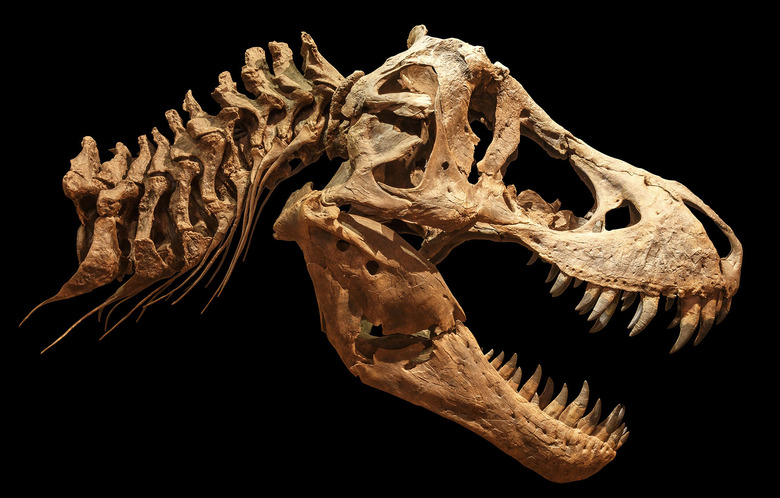Researchers Find Ultimate Smoking Gun In Dinosaur Extinction
- The debate over what killed the dinosaurs has remained unsettled for, well, forever.
- The leading theory is that a massive asteroid impact in the Gulf of Mexico set off a chain of events that dramatically changed the climate, snuffing most large species out.
- Now, new discoveries made at the site of that impact have been matched to the timeline of the dinosaur extinction, offering significant weight to the theory.
Ever since the first dinosaur fossils were discovered, humans have wondered how the massive beasts lived and, ultimately, what caused them to not exist anymore. A few decades ago, one theory began to look more and more plausible. That theory involved a huge crater found in the Gulf of Mexico which was large enough that the impact that created it could have dramatically affected the entire planet.
Scientists have always known the Chicxulub Crater is old, but with so many millions of years between the impact and present-day, it has always been a challenge to nail down exactly when the impact occurred. The timelines seemed to match up, but hard evidence was in short supply. That is, until now, as researchers announce in Science Advances that they've matched up the chemical makeup of asteroid dust found in the crater with other samples that were aged to the exact time of the mass extinction.
Finding a layer of asteroid dust around the globe that seemed to immediately precede a massive die-off of so many species was already pretty solid evidence, but linking the Chicxulub Crater to that event was a bit more difficult. The researchers in this new study say that they found asteroid dust "with a matching chemical fingerprint" inside the crater at the depth within the rock that precisely matches the timeline of dinosaur extinction in the fossil record.
As for how that impact led to such a world-changing extinction, scientists have a pretty good idea. The event would have kicked up an incredible amount of dust and debris when the asteroid was essentially vaporized upon impact. All of that dust would have floated for decades, blocking out the light from the Sun and both changing the temperature of the planet and also dramatically affecting plant growth.
As parts of the planet began to rapidly change and experience mass plant die-off, herbivores would have been severely impacted. As those animals died off, the carnivores that hunted them would have also found themselves quite hungry, eventually dying off as well. In short, once the impact occurred, the dinosaurs' days were numbered.
"If you're actually going to put a clock on extinction 66 million years ago, you could easily make an argument that it all happened within a couple of decades, which is basically how long it takes for everything to starve to death," co-author Sean Gulick said in a statement.
RIP the dinosaurs.
